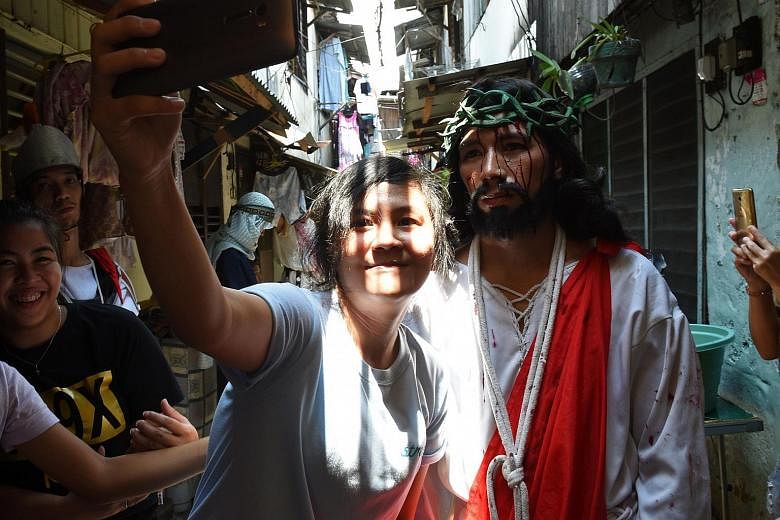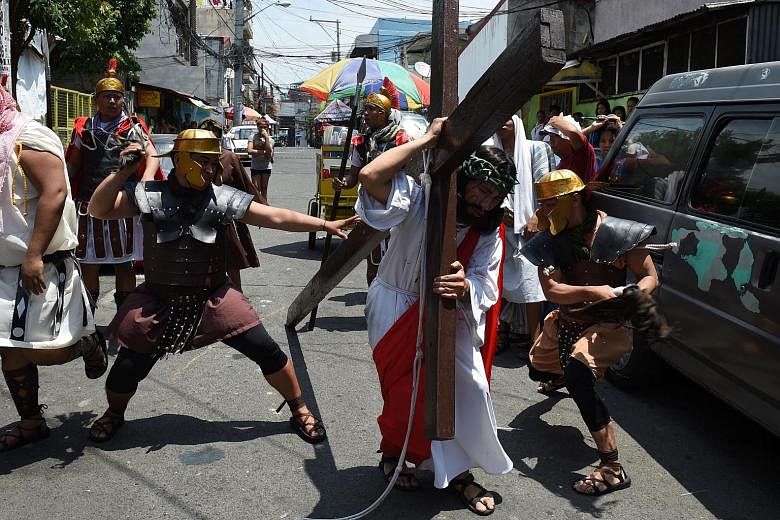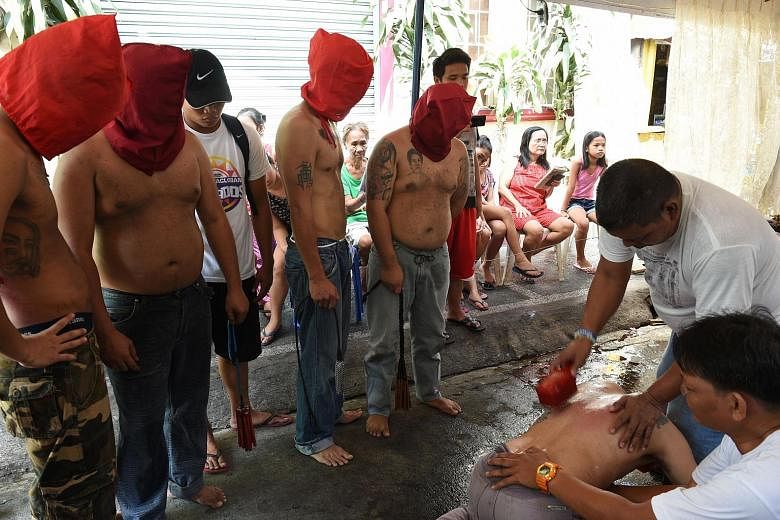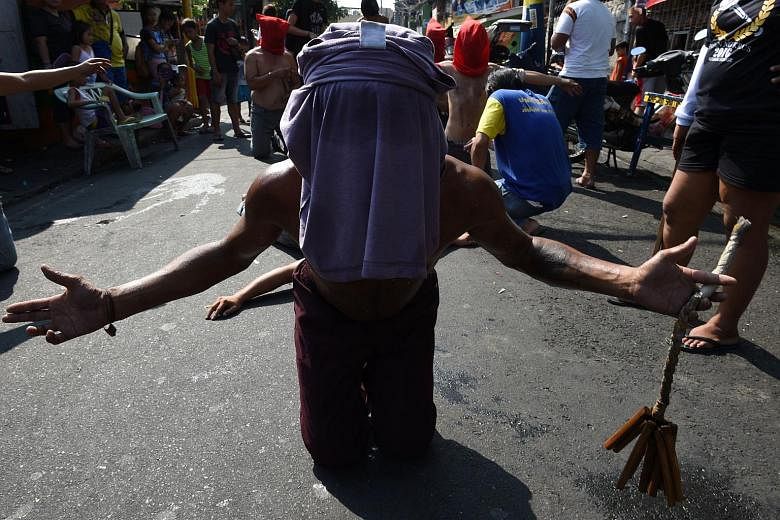SAN JUAN (AFP) - At least 17 men were set to be nailed to wooden crosses in the Philippines, Asia's Catholic heartland, on Good Friday in an extreme public display of faith.
Young men dressed as soldiers of the Roman empire dragged local fisherman Willy Salvador, 59, through San Juan toward a central square where he and two other men were scheduled to be crucified mid-morning.
"I know you would not believe me, but God helped me recover from a nervous breakdown," the slight, white-robed and barefoot man told AFP as he acted out the role of Jesus Christ.
"This is my personal way of thanking Him for healing me," said Salvador, who said he has had himself nailed to a cross each Good Friday since 2006.
The nails go through both hands and both feet, but do not bear the weight of the penitents, who spend only a few minutes on the cross before being taken down and having their wounds treated.
Similar crucifixions were also scheduled throughout the day in the neighbouring villages of San Pedro and Santa Lucia, including at least 14 in San Pedro, local officials said.
Ritual crucifixions are the most extreme forms of worship in some small villages in the Philippines, home to 80 million-plus Catholics.
The spectacle occurs on Good Friday, when Christians believe Jesus Christ was nailed to a cross to atone for mankind's sins.
Thousands of sightseers were expected in San Pedro, where the event is being held for the 30th year, to witness the crucifixions and other extreme forms of piety. They include bare-chested men parading through the streets while lashing their backs bloody with whips tipped with bamboo sticks.
After Salvador, it was the turn of street vendor Alex Daranang, whose 20th crucifixion fell on the eve of his 60th birthday.
"The wounds heal fast," the gap-toothed grandfather told AFP. "In two days they are practically healed."
The act is frowned upon by the church, but has become a major tourist attraction.
Several thousand sightseers, including more than a dozen Western tourists, descended on the nearby village of San Pedro to witness the mock crucifixions and other extreme forms of piety.
Motivational speaker Benjie Pazcoguin said "there is a symbolic meaning to these crucifixions. Definitely, it reinforces my faith." "I will come to see it again next year," he said, despite the gore.
Around a knoll where three tall wooden crosses awaited the San Pedro devotees, vendors did brisk business selling souvenir shirts, hats, soft drinks and food. A giant television screen displayed the macabre events to the rest of the crowd, who shielded themselves from the heat with bright-coloured umbrellas.
On the sun-scalded pavements of the village streets, hundreds of shoeless men, their faces shrouded in black cloths, shuffled in slow processions as they lashed their own backs with whips tipped with bamboo strips.
The men stopped in unison occasionally to lie face down on the pavement, handing over the whips to assistants who administered more punishment. Blood splattered on the spectators, while one of the penitents sank to his knees and began to throw up.
"You actually feel good, because you know some of your sins are being forgiven," construction worker Joel Yutoc, 23, told AFP as he sucked on a cigarette after the ordeal.
To those who practise them, they serve as an alternative to acts of Good Friday penance prescribed by the church, such as abstaining from work or from eating meat, and visiting a series of churches on foot to pray.
"The church discourages these (extreme) acts because Jesus Christ had already undergone that for all of us. There is no need to repeat it," Father Douglas Badong, rector of the Quiapo Catholic church in central Manila told AFP.
San Juan village chief Claro Tolentino said crucifixions and self-flagellations were part of the culture and traditions of the Philippines, which was converted to Catholicism during the 16th century Spanish colonial conquest.
"This is the culture that we were born into. Everyone should respect the culture and beliefs of our people," he added.






